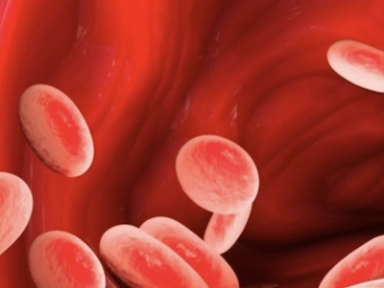Possible Challenges Post One Year of ESC/EAS Guidelines
One year after the ESC/EAS guidelines on cholesterol control: New evidence and possible challenges
Key Takeaway
This review article summarizes the new evidence from clinical trials since ESC/EAS 2019 guideline release and outlines following points that should be considered during the development of next guidelines, and the possible challenges for the development of future guidelines (what’s missing).
Lifetime Risk
- Based on score CV risk charts:
- Older individuals have the highest CV risk
- Though younger people may present a low 10-year risk, they might be at higher lifetime risk, due to a longer exposure time
- Definitions based on genetics and cholesterol burden might help to mitigate this problem by allowing calculation of a lifetime risk regardless of age, linking the CV benefit only to the reduction of LDL-C*
HDL and CV Disease
- Increasing HDL-C plasma levels would not be the correct way to achieve a benefit if this is not paralleled by an increase in the quality and functionality of HDL†
Evaluation of NON-HDL-C and apoB Levels
- Should non-HDL-C and apoB levels be evaluated in all individuals?
- Non-HDL-C and apoB levels are associated with CV risk ApoB marker provides exactly the number of atherogenic particles, which offers more accurate estimate of the total concentration of atherogenic particles
- Though younger people may present a low 10-year risk, they might be at higher lifetime risk, due to a longer exposure time
- Non-HDL-C and apoB levels may be more appropriate for risk evaluation among patients having diabetes or hypertriglyceridemia, who may have LDL-C levels in the range of normality
Lp(a)
- Independent of LDL-C levels, elevated levels of Lp(a) represent a risk factor for CV disease
- To obtain the same benefit seen with 1 mmol/L reduction in LDL-C (~ x223C 40 mg/dL), it is necessary to reduce Lp(a) by 70–90 mg/dL‡
Goals vs %x0025 Reduction
- New vs previous guidelines: More intensive reduction in LDL-C levels (LDL-C reduction of ≥50% from baseline and an LDL-C goal of <1.4 mmol/L or <1.8 mmol/L for very high-risk and high-risk patients, respectively)
- In individuals with lower baseline values of LDL-C, going beyond the achievement of the LDL-C goal ensures a reduction in CV risk
- Based on the observation: Lower the achieved LDL-C values, the lower the risk of future CV events, with no lower limits for LDL-C values
Clinical Trial Design: Factors to Be Taken Into Consideration
- Study design plays a crucial role among the reasons that may explain the failure of a clinical trial
- Patients with lower baseline LDL-C: No matter how effective a drug is, it will inevitably result in a lower risk reduction
- Study duration: Drug benefit during the first year is lower vs subsequent years, which may significantly underestimate a potential effect if the follow-up is too short
Stepwise Approach to Hypercholesterolemi
- Study design plays a crucial role among the reasons that may explain the failure of a clinical trial
- Patients with lower baseline LDL-C: No matter how effective a drug is, it will inevitably result in a lower risk reduction
- Study duration: Drug benefit during the first year is lower vs subsequent years, which may significantly underestimate a potential effect if the follow-up is too short
Adherence to Therapy
- Although it is well established that adherence to lipid-lowering therapy increases the survival of patients, goal achievement among patients with established atherosclerotic cardiovascular disease is commonly suboptimal in the clinical practice
- Many patients at high or very-high CV risk are still being treated inadequately (high percentage of patients on a moderate dose of statin, few on statin + ezetimibe, and an even fewer on a proprotein convertase subtilisin/kexin type 9 inhibitor)
- Gaps still exist between guideline recommendations and clinical practice; current more stringent goals may further increase these gaps
- Awareness of optimal therapy for CV benefit needs to be increased
Why This Matters
- The recent ESC/EAS 2019 guidelines for the management of dyslipidemias have highlighted the importance of a powerful reduction in LDL-C levels to reduce the individual CV risk.
- However, some challenges remain to be addressed in view of future guideline elaboration
- New guidelines will have to address a fundamental challenge in medicine: Treat to prevent or treat when it is perhaps late?
- As of now, we have positioned our attention on the latter, which may not be the best choice.
* Literature evidence: Mendelian randomization studies; early therapeutic intervention in familial hypercholesterolemia patients, can delay or even normalize the CV event curve
† As suggested by the U-shaped association between HDL-C levels and cardiovascular and all-cause mortality
‡ Based on results from Mendelian randomization studies
apoB=apolipoprotein B; CV=cardiovascular; EAS=European Atherosclerosis Society; ESC=European Society of Cardiology; HDL-C=high-density lipoprotein-cholesterol; LDL-C=low-density lipoprotein-cholesterol; Lp(a)=Lipoprotein(a).
- Averna M, Catapano AL. One year after the ESC/EAS guidelines on cholesterol control. What's the new evidence? What's missing? Eur J Intern Med. 2022;95:1–4. doi: 10.1016/j.ejim.2021.10.017. PMID: 34728127.




.webp/jcr:content/jcr_content%20(9).webp)